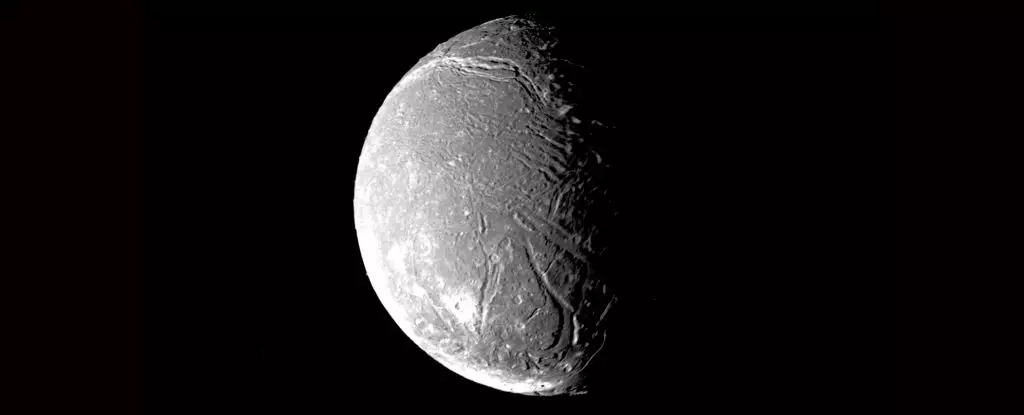The moons of our Solar System hold a plethora of secrets, especially those orbiting the gas giants like Jupiter, Saturn, Uranus, and Neptune. Among these, Ariel, one of Uranus’s moons, has recently garnered the interest of planetary scientists due to its intriguing surface features. The surface is crisscrossed with deep chasms, which might not only be mere geological formations but also gateways to a hidden ocean residing beneath a thick icy exterior. This fascinating prospect compels scientists to rethink their exploration strategies, focusing on Ariel as a prime candidate for understanding the complex interplay between geology and possible life-sustaining environments in our cosmic neighborhood.
Scientific interest in Ariel is primarily drawn from the potential evidence of liquid water lurking beneath its icy crust. Chloe Beddingfield, a planetary geologist, highlights that the chasms on Ariel may hold vital clues about the moon’s interior. Carbon dioxide ice and carbon-bearing compounds recently observed by scientists could suggest a rich chemical history influenced by geothermal processes. If Ariel indeed harbors a subsurface ocean, these chasms could be critical to unraveling its geological narrative without resorting to more invasive exploratory methods.
These striking features are not merely aesthetic; they are geological signatures indicative of activity below the surface. The presence of parallel grooves on the chasm floors points toward an active geologic past, potentially shaped by vulnerabilities in the moon’s ice shell. Researchers theorize that these grooves might align with a process known as seafloor spreading, familiar to Earth scientists studying tectonic movements. Such discoveries shift our understanding of Ariel’s evolution and its potential habitability. If similar processes are at play here as on Earth, they could indicate a dynamic history still unfolding beneath the moon’s icy veneer.
Ariel’s story is not solely fashioned by internal dynamics; it is also influenced by external celestial mechanics. Previous research has indicated that gravitational interactions among Uranus’s moons might have induced orbital resonance, leading to periods of increased activity within Ariel’s interior. This phenomenon can facilitate the transfer of heat, possibly creating the conditions necessary for a subsurface ocean to exist. The correlation between these gravitational interactions and observed geological features raises significant questions about the moon’s climatic history and its ability to maintain liquid water.
The findings from the James Webb Space Telescope (JWST) provide tantalizing hints of this subsurface ocean. Researchers see parallels between Ariel and other ocean worlds like Europa and Enceladus, where surface features strongly suggest liquid water exists beneath thick ice. However, while the presence of carbon dioxide ices on Ariel’s surface hints at that possibility, the depth and size of the potentially oceanic layer remain uncertain. Many mysteries linger, and researchers grapple with the limitations of past missions, which lacked the necessary tools to analyze ice distributions effectively.
Current research on Ariel reinforces the urgent need for dedicated exploration missions to the ice giants of our Solar System. While the findings surrounding Ariel are captivating, they emphasize our limited understanding of these enigmatic moons. Each new discovery urges the scientific community to advocate for missions capable of providing deeper insights into the processes at play in these distant worlds.
Ariel’s grooves and other surface features beckon for thorough investigation. They symbolize the uncharted territory waiting to be explored, revealing not just the geological evolution of moons like Ariel but also the broader implications for extraterrestrial life. The mystery shrouding Ariel serves as a reminder that even the most distant parts of our Solar System can reveal conditions conducive to life.
As scientific curiosity accelerates, the encouragement is clear: space agencies must prioritize missions to Uranus and Neptune. Ariel stands as a beacon—its grooves represent both a challenge and a gateway to understanding not only our Solar System’s history but also the intricate conditions that could nurture life beyond Earth. The quest, it appears, is only just beginning.


Leave a Reply